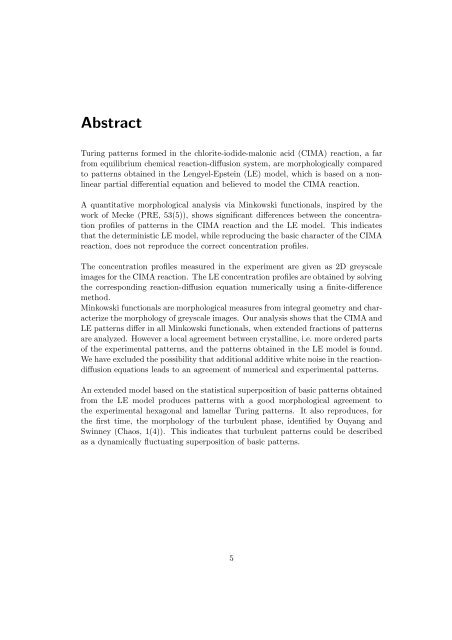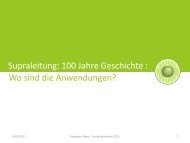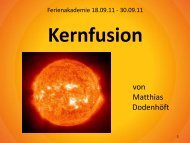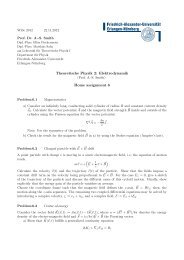Morphology of Experimental and Simulated Turing Patterns
Morphology of Experimental and Simulated Turing Patterns
Morphology of Experimental and Simulated Turing Patterns
You also want an ePaper? Increase the reach of your titles
YUMPU automatically turns print PDFs into web optimized ePapers that Google loves.
Abstract<strong>Turing</strong> patterns formed in the chlorite-iodide-malonic acid (CIMA) reaction, a farfrom equilibrium chemical reaction-diffusion system, are morphologically comparedto patterns obtained in the Lengyel-Epstein (LE) model, which is based on a nonlinearpartial differential equation <strong>and</strong> believed to model the CIMA reaction.A quantitative morphological analysis via Minkowski functionals, inspired by thework <strong>of</strong> Mecke (PRE, 53(5)), shows significant differences between the concentrationpr<strong>of</strong>iles <strong>of</strong> patterns in the CIMA reaction <strong>and</strong> the LE model. This indicatesthat the deterministic LE model, while reproducing the basic character <strong>of</strong> the CIMAreaction, does not reproduce the correct concentration pr<strong>of</strong>iles.The concentration pr<strong>of</strong>iles measured in the experiment are given as 2D greyscaleimages for the CIMA reaction. The LE concentration pr<strong>of</strong>iles are obtained by solvingthe corresponding reaction-diffusion equation numerically using a finite-differencemethod.Minkowski functionals are morphological measures from integral geometry <strong>and</strong> characterizethe morphology <strong>of</strong> greyscale images. Our analysis shows that the CIMA <strong>and</strong>LE patterns differ in all Minkowski functionals, when extended fractions <strong>of</strong> patternsare analyzed. However a local agreement between crystalline, i.e. more ordered parts<strong>of</strong> the experimental patterns, <strong>and</strong> the patterns obtained in the LE model is found.We have excluded the possibility that additional additive white noise in the reactiondiffusionequations leads to an agreement <strong>of</strong> numerical <strong>and</strong> experimental patterns.An extended model based on the statistical superposition <strong>of</strong> basic patterns obtainedfrom the LE model produces patterns with a good morphological agreement tothe experimental hexagonal <strong>and</strong> lamellar <strong>Turing</strong> patterns. It also reproduces, forthe first time, the morphology <strong>of</strong> the turbulent phase, identified by Ouyang <strong>and</strong>Swinney (Chaos, 1(4)). This indicates that turbulent patterns could be describedas a dynamically fluctuating superposition <strong>of</strong> basic patterns.5






